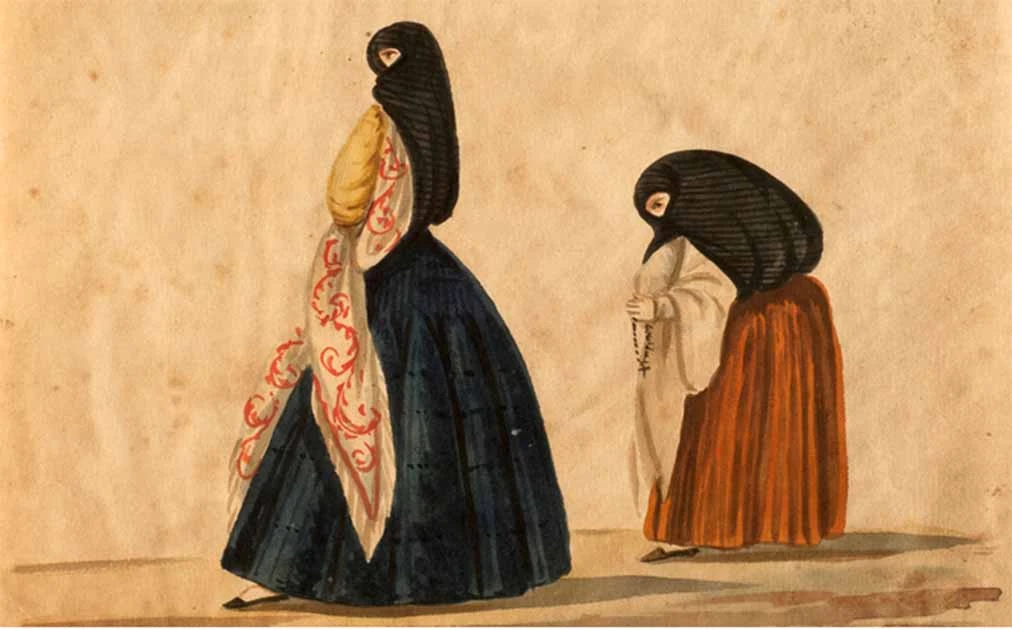“In an era where the term “burka” evokes images of oppressive regimes, notably Afghanistan’s coercive imposition on women, it may come as a surprise that the tapada limeña (meaning “the covered one from Lima”) was used as a cloak of female resistance to authority by the women of Lima for over three hundred years….
Women who wore them were described as “insolent vipers” by one poet, while they were even blamed for the 1746 earthquake which destroyed Lima: “God had punished the capital for the audacity of some women that everyone, native and foreign, considered to be an erotic symbol,” claimed La Vanguardia . In 1833, the feminist Flora Tristán wrote that the women of Lima were the “freest in the world” since their clothing allowed them to evade the surveillance of men.“
Cool article.
Its kind of been a strand in eastern feminism for a long time now, choice about whether or not people get to look at you. If I remember rightly, before the Persian revolution there was also a class element.
Women who wore them were described as “insolent vipers” by one poet
The Insolent Vipers would make a kickass band name.
Fascinating information. Here’s a direct link to the newspaper article cited by the linked blog post, if you read Spanish: https://www.lavanguardia.com/historiayvida/edad-moderna/20220118/7967285/tapadas-limenas-mujeres-libres-anonimato.html



